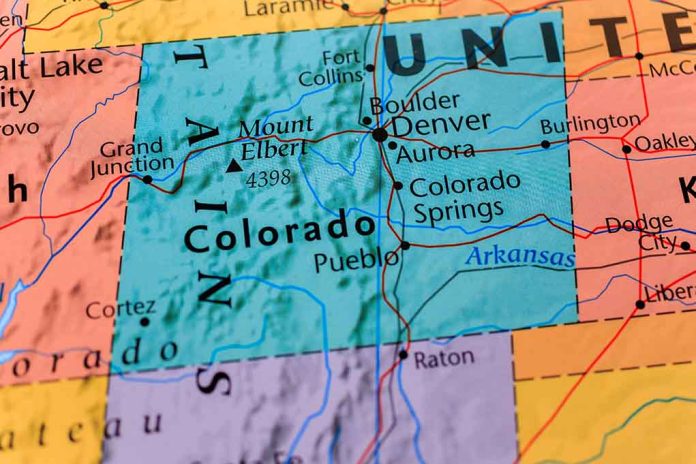
Two high-speed trains collided head-on in Colorado, causing power outages and dangerous fuel leaks.
At a Glance
- Two high-speed trains collided head-on in Colorado.
- The accident caused severe power outages and fuel leaks.
- Intensive rescue and restoration efforts are ongoing.
- Authorities have launched an investigation into the incident.
Collision Leads to Power Outages and Fuel Leaks
Colorado faced a significant crisis when two high-speed trains collided head-on. The incident led to severe power outages affecting numerous residents. The collision also caused dangerous fuel leaks, raising serious environmental concerns. Rescue and restoration teams swiftly mobilized to manage the immediate crises, focusing on restoring power and containing the hazardous spills.
The power outage disrupted daily life and essential services for thousands of residents. Utility companies are working tirelessly to restore electricity as soon as possible. The spilled fuel’s environmental impact has become a primary concern, as it poses significant risks to local ecosystems and water supplies.
A freight train derailed in Boulder, Colorado, destroying a rail bridge. A small amount of fuel leaked from the engine, but was absorbed by sand that spilled from one of the cars. pic.twitter.com/6RxbLvxBPb
— CBS Evening News (@CBSEveningNews) August 23, 2024
Ongoing Rescue Efforts and Environmental Concerns
Emergency teams continue their efforts on the ground to clean up the spilled fuel and mitigate environmental damage. Specialists are assessing the full extent of the ecological threat posed by the leaked contaminants. Local authorities emphasize the importance of minimizing the spill’s reach into water sources and soil.
The investigation aims to uncover the events leading to the collision. Understanding the accident’s cause is essential for developing enhanced safety measures, ensuring such incidents do not recur. Investigators are looking into various factors, including track conditions, signaling systems, and possible human errors.
Authorities Launch Investigation
Authorities have confirmed the launch of a thorough investigation to determine the cause of the train collision. They are pursuing all leads to establish what went wrong and to prevent future incidents. This investigative process will involve meticulous examination of evidence, including train operation logs and maintenance records.
Rescue teams are also working to ensure the safety of those impacted by the crash. Special attention is given to securing the crash site and checking for any remaining hazards. The incident has sparked renewed discussions on railway safety protocols and investment in infrastructure improvements.
The collision highlights the pressing need for updated safety measures across the country’s railway systems. Ensuring the proper maintenance of tracks and signal systems is crucial in preventing such disasters. This accident serves as a stark reminder of the importance of ongoing vigilance and robust safety standards.
















